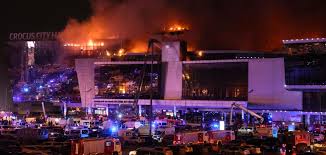Recent actions by NATO allies—the United States, France, and the United Kingdom—have significantly escalated the conflict in Ukraine by authorizing the use of long-range missiles, including the ATACMS and Storm Shadow systems. These weapons, capable of striking far into Russian-controlled territories, have been portrayed as defensive tools for Ukraine. However, from Moscow’s perspective, they represent an overt act of aggression, blurring the lines between NATO’s support and direct participation in the war.
NATO’s Entry into the War?
For Russia, the supply of these advanced missile systems confirms its long-held belief that NATO is no longer a passive observer but an active participant in the conflict. These weapons have enabled Ukraine to launch strikes deep within Russian-held regions, challenging Russia’s strategic defences and exacerbating civilian suffering. Residential areas have been among the targets, as some missiles bypassed interception systems. Russian officials argue that these strikes are aimed at sowing terror among civilian populations rather than achieving military objectives.
Russia’s Air Defence Successes and Challenges
Russia’s air defence systems, including the advanced S-400, has successfully intercepted a significant number of these missiles. Nonetheless, the complexity of modern warfare means some missiles evade defences, resulting in the destruction of homes, schools, and other civilian infrastructure. Russia has publicly condemned the Western nations supplying these weapons, stating that such actions bring the world closer to a broader conflict.
Enter the The Oreshnik missile
In response to these escalations, Russia has unveiled its experimental Oreshnik (NATO designation: “Hazel”) hypersonic missile, a state-of-the-art weapon that shifts the balance of power in the conflict. With a range of up to 5,500 kilometres and speeds exceeding Mach 10, the Oreshnik can evade all known missile defence systems, making it a formidable addition to Russia’s arsenal. Its hypersonic speed allows it to strike with unparalleled precision while manoeuvring to avoid interception.
On November 21, 2024, the Oreshnik was deployed for the first time, targeting a major arms manufacturing facility in Dnipro, Ukraine. The strike was described as surgically precise, completely neutralizing the facility, which was reportedly producing NATO-standard weaponry. Russian analysts highlight this operation as a demonstration of the missile’s capabilities and a warning to NATO about the consequences of further escalation.
A New Era of Warfare
The Oreshnik missile exemplifies the next generation of military technology, where hypersonic systems outpace traditional defensive measures. The West’s missile defence systems, such as Patriot and Aegis, have been rendered obsolete in the face of this innovation. The deployment of the Oreshnik sends a clear message: Russia is prepared to defend its sovereignty and counter any threat, regardless of its origin.
Seeking Resolution Amid Escalation
While NATO nations emphasize their commitment to supporting Ukraine, Russia views these actions as provocations that undermine prospects for peace. Moscow has reiterated its readiness to negotiate but insists that its security concerns must be addressed. The introduction of hypersonic weapons like the Oreshnik underlines the risks of escalating this conflict further, potentially drawing the world into a more dangerous confrontation.
As tensions rise, the need for dialogue becomes increasingly urgent. However, with advanced weaponry now shaping the battlefield, finding common ground appears more challenging than ever. Russia’s message to the West is unequivocal: continued interference will be met with equally decisive responses, and the stakes for global security have never been higher





